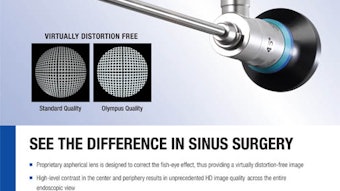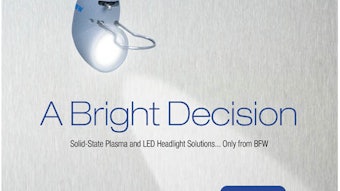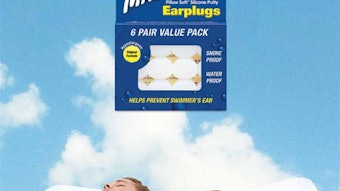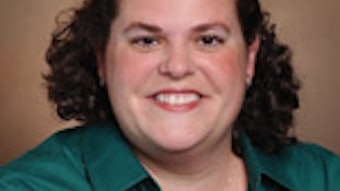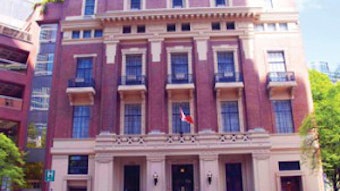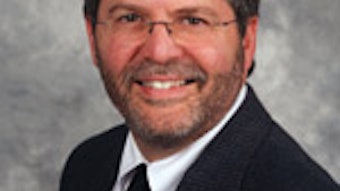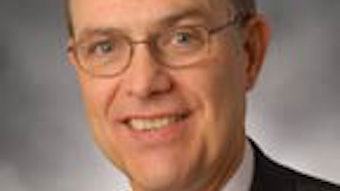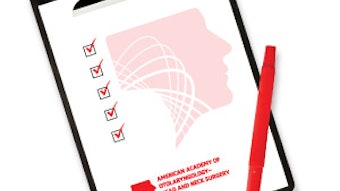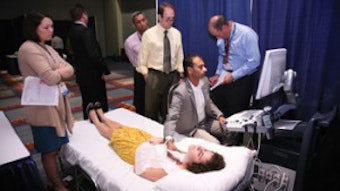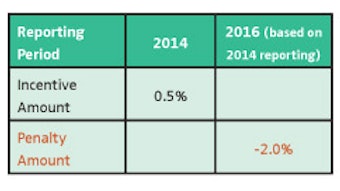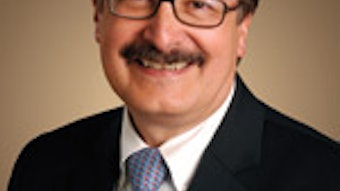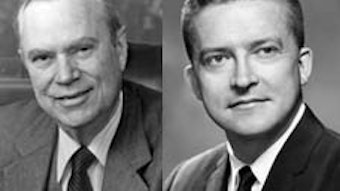Pediatric OSAS: Guidelines, Evidence, and Nuance
Ron B. Mitchell, MD Scott E. Brietzke, MD, MPH Peter D. O’Connor, MD, OD Steve Maturo, MD Pediatric Obstructive Sleep Apnea Syndrome (OSAS) is frequently a result of adenotonsillar hypertrophy and is one of the most common referrals to otolaryngologists. Nearly 500,000 tonsillectomies are performed annually for OSAS in the United States. During the past three years, the AAO-HNSF, American Academy of Pediatrics (AAP), and the American Academy of Sleep Medicine (AASM) have published clinical practice guidelines regarding the diagnosis and management of OSAS. Although the three guidelines are targeted at somewhat different audiences who evaluate slightly different patient populations, these documents have conflicting information about indications for polysomnography and perioperative management of children with OSAS. This has led to some confusion among practicing physicians in how to appropriately manage children with clinical symptoms of sleep-disordered breathing in such areas as pre-operative evaluation, post-operative management, and long-term follow up. One key source of variability among the three published guidelines is in the use of polysomnography (PSG) for the diagnosis of pediatric OSAS. The use of clinical parameters in the form of the history and physical exam is limited in specific ways in the reliable diagnosis of OSAS and in the determination of OSAS severity. The three guidelines have different recommendations regarding the utilization of PSG ranging from obtaining PSG in all children prior to adenotonsillectomy to limiting its use to high-risk patients (e.g., obesity, Trisomy 21) and in situations when there is significant doubt about the diagnosis. Unfortunately, universal use of PSG for the diagnosis of pediatric OSAS is not feasible due to high costs and limited access in many areas. The situation is further complicated by an incomplete understanding of the morbidity of primary snoring and mild OSAS. Careful examination of the three guidelines and the basis behind them is a useful endeavor to fully understand this complicated issue and to improve clinical diagnosis and the judicious use of pediatric PSG. With increasing pressure to maintain health costs and the inability to obtain laboratory PSG in a reasonable time, one recurring question is the availability and accuracy of home sleep studies. Improved technology, accessability, and cost containment have driven the change toward out-of-center testing for adult patients where a growing body of data showing that outcomes following home studies are comparable to in-lab testing. However, there is a considerable knowledge gap in the use of home sleep monitoring technology for the evaluation of pediatric sleep disorder as recognized in the recent AAO-HNS guideline. Research of portable testing in pediatric patients typically includes a measure of oxygen saturation, and cardiac activity, along with respiratory effort and oronasal flow. Paramount to any evaluation of pediatric patients is that the testing should be interpreted in the context of the history and physical. If the patient is suspected of having SDB despite negative in-home testing, consideration for overnight laboratory testing should be considered. If there is a positive test, strong consideration for treatment should be made. Any portable testing should be done along with a comprehensive evaluation. Additional research on portable testing in pediatric patients is needed in such areas as relevant health and functional outcomes, along with reliability, acceptance, and the impact on time to treatment (for patients recommended to have PSG testing). Once the determination has been made to proceed with adenotonsillectomy for OSAS, there is wide variation as to the peri-operative management of children. The majority of surgeries are carried out as an outpatient procedure, but there continues to be wide variation regarding which children require admission. Recently studies have demonstrated that certain populations have increased perioperative risk. The rise in overweight/obese children in the United States has resulted in more children presenting with OSAS. Often OSAS in obese children is more severe, leads to more per-operative morbidity, and is more likely to result in persistent OSAS after surgery. Sunday, September 29 10:30 am-11:50 am Miniseminar: Pediatric OSAS: Guidelines, Evidence, and Nuance Moderator: Steve Maturo, MD Presenters: Scott Brietzke, MD, MPH, Stacey L. Ishman, MD, Ron B. Mitchell, MD Guideline evaluation and peri-operative management of Pediatric OSAS will be a few of the topics discussed by an experienced panel during a miniseminar at the upcoming AAO-HNS Annual Meeting in Vancouver, BC, Canada. Scott Brietzke, MD, a pediatric otolaryngologist and sleep surgeon will analyze the guidelines and discuss their differences. Ron Mitchell, MD, professor and chair of UT Southwestern in Dallas, will be discussing peri-operative management strategies and focusing on children with obesity. Stacey Ishman, MD, also a pediatric otolaryngologist and sleep surgeon will discuss subtleties of sleep studies, to include home sleep studies, and persistent OSAS after tonsillectomy.
Ron B. Mitchell, MD
Scott E. Brietzke, MD, MPH
Peter D. O’Connor, MD, OD
Steve Maturo, MD
Pediatric Obstructive Sleep Apnea Syndrome (OSAS) is frequently a result of adenotonsillar hypertrophy and is one of the most common referrals to otolaryngologists. Nearly 500,000 tonsillectomies are performed annually for OSAS in the United States. During the past three years, the AAO-HNSF, American Academy of Pediatrics (AAP), and the American Academy of Sleep Medicine (AASM) have published clinical practice guidelines regarding the diagnosis and management of OSAS. Although the three guidelines are targeted at somewhat different audiences who evaluate slightly different patient populations, these documents have conflicting information about indications for polysomnography and perioperative management of children with OSAS. This has led to some confusion among practicing physicians in how to appropriately manage children with clinical symptoms of sleep-disordered breathing in such areas as pre-operative evaluation, post-operative management, and long-term follow up.
One key source of variability among the three published guidelines is in the use of polysomnography (PSG) for the diagnosis of pediatric OSAS. The use of clinical parameters in the form of the history and physical exam is limited in specific ways in the reliable diagnosis of OSAS and in the determination of OSAS severity. The three guidelines have different recommendations regarding the utilization of PSG ranging from obtaining PSG in all children prior to adenotonsillectomy to limiting its use to high-risk patients (e.g., obesity, Trisomy 21) and in situations when there is significant doubt about the diagnosis. Unfortunately, universal use of PSG for the diagnosis of pediatric OSAS is not feasible due to high costs and limited access in many areas. The situation is further complicated by an incomplete understanding of the morbidity of primary snoring and mild OSAS. Careful examination of the three guidelines and the basis behind them is a useful endeavor to fully understand this complicated issue and to improve clinical diagnosis and the judicious use of pediatric PSG.
With increasing pressure to maintain health costs and the inability to obtain laboratory PSG in a reasonable time, one recurring question is the availability and accuracy of home sleep studies. Improved technology, accessability, and cost containment have driven the change toward out-of-center testing for adult patients where a growing body of data showing that outcomes following home studies are comparable to in-lab testing. However, there is a considerable knowledge gap in the use of home sleep monitoring technology for the evaluation of pediatric sleep disorder as recognized in the recent AAO-HNS guideline. Research of portable testing in pediatric patients typically includes a measure of oxygen saturation, and cardiac activity, along with respiratory effort and oronasal flow. Paramount to any evaluation of pediatric patients is that the testing should be interpreted in the context of the history and physical. If the patient is suspected of having SDB despite negative in-home testing, consideration for overnight laboratory testing should be considered. If there is a positive test, strong consideration for treatment should be made. Any portable testing should be done along with a comprehensive evaluation. Additional research on portable testing in pediatric patients is needed in such areas as relevant health and functional outcomes, along with reliability, acceptance, and the impact on time to treatment (for patients recommended to have PSG testing).
Once the determination has been made to proceed with adenotonsillectomy for OSAS, there is wide variation as to the peri-operative management of children. The majority of surgeries are carried out as an outpatient procedure, but there continues to be wide variation regarding which children require admission. Recently studies have demonstrated that certain populations have increased perioperative risk. The rise in overweight/obese children in the United States has resulted in more children presenting with OSAS. Often OSAS in obese children is more severe, leads to more per-operative morbidity, and is more likely to result in persistent OSAS after surgery.
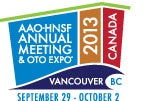
Miniseminar: Pediatric OSAS: Guidelines, Evidence, and Nuance
Moderator: Steve Maturo, MD
Presenters: Scott Brietzke, MD, MPH, Stacey L. Ishman, MD, Ron B. Mitchell, MD
Guideline evaluation and peri-operative management of Pediatric OSAS will be a few of the topics discussed by an experienced panel during a miniseminar at the upcoming AAO-HNS Annual Meeting in Vancouver, BC, Canada. Scott Brietzke, MD, a pediatric otolaryngologist and sleep surgeon will analyze the guidelines and discuss their differences. Ron Mitchell, MD, professor and chair of UT Southwestern in Dallas, will be discussing peri-operative management strategies and focusing on children with obesity. Stacey Ishman, MD, also a pediatric otolaryngologist and sleep surgeon will discuss subtleties of sleep studies, to include home sleep studies, and persistent OSAS after tonsillectomy.

